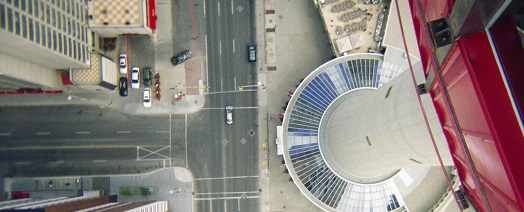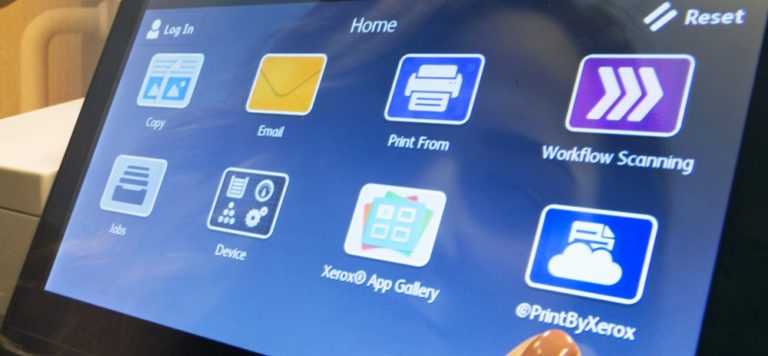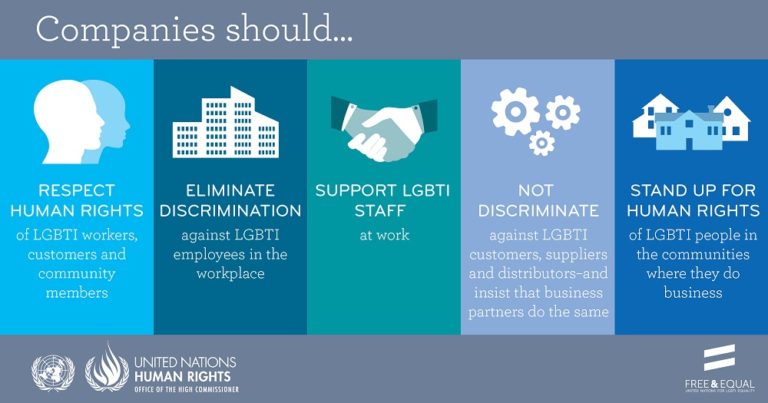By Frédéric Roulland
It’s 2035, and I’m on my way home on a spring evening. I’m a city dweller, one of 6.3 billion people around the world who live in urban areas. Come along with me as I head home in this brand new city.
You’d be surprised at how different things are. You probably have an old-fashion view of cities – massive places with land covered by congested roadways and parking lots. It’s not like that anymore.
The new cities they’re building today are compact and easy to get around, with lots of green space. They are run, for the most part, by data-driven systems that efficiently manage energy consumption, transportation and other citizen services. Through social media forums, everyone can share concerns, compare ideas and engage with those we elected so that we are all involved in shaping where and how we live.
Don’t bother looking for the parking lot. I don’t own a car. We’ll take a short walk and then jump in a driverless shuttle. I often use the shared car and bike systems, but I’ve just been alerted (through the travel guidance system that that displayed a message on my contact lens) that I may have to wait a little for a car and that the shuttle will get me home faster.

I’m not headed home to my neighborhood per say; our city is composed of self-sufficient districts (little towns) where people live, shop, work, study and have fun. Some of these districts have become so self-sufficient that they have their own energy grids and small farms. This approach has resulted in urban areas that are free of pollution and congestion. They grow and adapt to citizen needs without having to create more roads and vehicles.
Everyday objects in the home and in the environment around us outside are smart and connected to one another. Roads warn connected vehicles about weather and traffic conditions … houses and public lighting adapt to people’s presence and activities … waste containers contact collection services when they are full. These networks make it possible to sense what is happening in an environment and provide data to the systems that operate our cities. Some of the benefits include:
A hassle-free way of life. As we make our way home tonight, we will be guided to different transportation services based on our current needs, our preferences, and in the context of external events that could impact our travel experience. A system will automatically compute the best price for my travel while I am moving through the transportation infrastructure. At the end of the month, I will be charged a fare without having to worry about the various transport providers I was using.
A more effective government. Smart algorithms that process data help our city leaders make good investments and policies. They know, for example, how many shared bikes need to be available near my home tomorrow morning, and how best to schedule the public transit shuttles. They can determine how to adjust roadway tolls to avoid traffic congestion.
A proactive approach to unexpected events. With a smart infrastructure, we get real-time information from many sources. It’s combined with information on the past, and smart algorithms use this to predict what might happen next. During last year’s blizzard, for instance, city officials knew where to send the field operations teams first; they reorganized services and were able to provide useful real-time information to citizens based on weather, ground conditions, and more.
But one of the best things about city life in 2035 is my connection to the community. Through these smart systems and open data (information that can be freely used, reused and redistributed by anyone), I know the status of my city at any given moment in time. I can see the current level of pollution, the cost of running the shuttle I’m using, and even the amount of garbage collected in my building last year and how much it cost to recycle it. This insight helps me better understand how the personal decisions I make impact the community as a whole.
This evening, because I finally decided to take the shuttle instead of the shared car, I know that I have reduced my energy consumption by a factor of ten and contributed to the reduction of traffic during peak time (for the third consecutive week). And here’s a little icing on the cake; I was just notified my company is recognizing me as one of the top ten eco travelers this week! That means I’ll see a 10 percent discount on next month’s transportation bill.
Frédéric Roulland is a Xerox computer scientist who leads the Data Intelligence group at Xerox Research Centre Europe. He combines big data, software algorithms and insights from ethnographers’ studies to create systems that have a positive impact in transportation, customer care and office work environments. He is the Xerox European champion for transportation research activities.
Subscribe to Simplify Work and receive email updates when we publish a new article.
We asked Xerox people:
Which of the following will be the “smartest” major city in 2035?
If we built a brand new city tomorrow, how would it differ from today’s cities?
According to Xerox people, the city of tomorrow will be much greener … both figuratively and literally. “Water, energy and waste will all be interconnected on a grid that efficiently manages output and conserves resources. Solar energy, wind and green waste will supply power to the residents who will live in efficient dwellings. Community gardens will provide food and solace and also help purify the air.” Green spaces will be everywhere – “parks, rooftops” even “vertical gardens to save some space.”
Some described seamless connections between the city and its residents. “City-wide WiFi will run off of a communications network … based on fiber optics. Goodbye copper wires!” “Even buildings will be ‘smart’ … they will recognize you [and] communicate with you.”
“Since people will be working in virtual offices,” traffic may decline, but new problems will arise. That’s why the city of tomorrow may be built to “combat the negative aspects of technology – that it often isolates us physically and increases sedentary lifestyles.”
And many predicted effortless transportation. “Transportation will be public-only within the metropolis to cut down on emissions and space required to park personal motorized vehicles.” Or maybe vehicles won’t be necessary, thanks to airport-style “horizontal revolving roads” throughout the city.
“Connection” and “efficiency” resonate with Xerox scientist Frédéric Roulland as he envisions a metropolis where citizens understand how personal decisions impact the community as a whole.





What a horror!
Connection and efficiency are not my primary needs in life. I need privacy, leisure, security and independence.
Thank heavens, it’s not too likely that I’ll be around in 2035!
Hello to every body, it’s my first pay a quick visit of this website;
this webpage consists of remarkable and in fact good stuff inn support of visitors.
I’m very happy to see that you like this article. Thanks for letting me know. If you like articles about future tech, bookmark this link to our “Next 75″ category page: http://simplifywork.blogs.xerox.com/category/next75/ I think you’ll like what you see.
Also, have you subscribed to Simplify Work? Go to http://xerox.bz/1l3d3eQ and follow the prompts. This will send you an email alert when ever we post a new article.
Cheers!